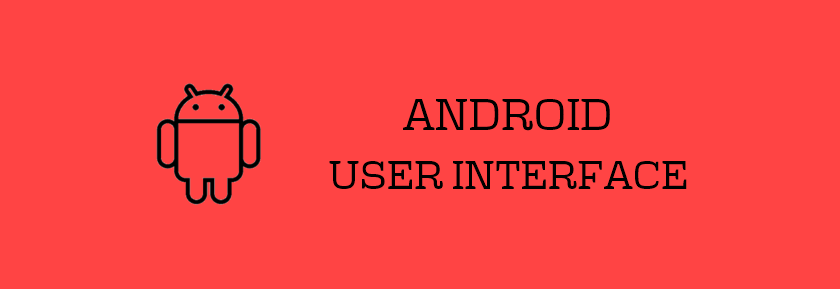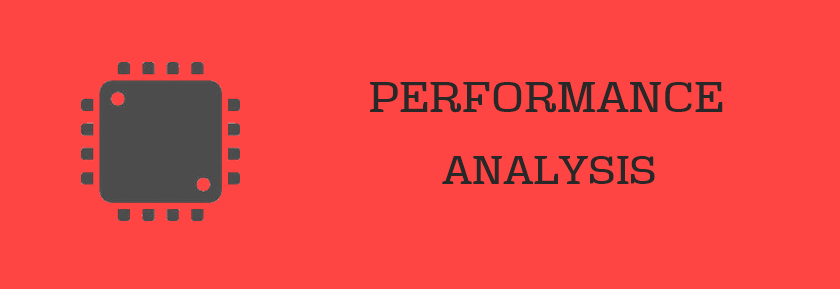It hasn’t even been a week since Google bombed the Indian smartphone market with launch of three Android One devices in partnership with Micromax, Karbonn and Spice, and the devices are already creating a lot of buzz in the Android community worldwide, not just India. Google launched the Android One initiative to offer a pure Android experience to the users with-in a budget that everyone could afford in a developing market like India. Google also promises to roll the Android L update to the Android One devices in the coming months which is a great thing.
But the Android One devices are not the only phones out there in the budget segment. There are a lot of other devices that are competing head-to-head with the Android One device and one such device is Xiaomi’s Redmi 1S. The Redmi 1s is launched in the sub $100 category and recorded mind boggling sales in India. The Redmi devices are being sold like hot cakes and they have already been out-of-stock twice that too in a matter of seconds, thanks to Xiaomi’s limited weekly flash sale system.
So today here we are to compare the Android One devices and the Redmi 1S and let’s see who has the upper hand over the other. All the three Android One devices launched by Micromax, Karbonn and Spice share the similar Specs and design attributes, so it will be a direct compression of Android One devices with the Redmi 1S rather than comparing each of them with Redmi separately.
BUILD QUALITY
Android One
The Android One devices bears an aesthetic and minimal looking Canvas A1 which reminds us of the Google Nexus family. The build of the device looks sturdy with the polycarbonate shells at the back (Karbonn used plastic though). The devices bears smooth rounded edges with curved corners, making them feel good in the hands. The removable back cover sports a camera port at the top and the speaker port at the bottom center. All the Android One devices come in multi-color option and meets the Google’s guidelines in terms of design and quality. There are no capacitive buttons at the bottom as they are included in the UI itself.
Mi Redmi 1S
The Redmi 1s comes with a boring mono-block design with more or less rounded edges. The Redmi 1s has a glossy plastic removable back panel which will attract fingerprints on the back panel. The phone is also a bit heavy which will not be a great experience when holding in the hand, but will do fine. In the front there are three capacitive red coloured buttons but lacks the backlit which is a problem in the dark. The camera module is at the back of the device with LED flash just below it.
Considering the design and the quality of the devices, the Android One devices has a clear lead over the Redmi 1S with their superior quality and premium looks. The Redmi 1S lost this round due to the very common boring design and the lack of backlit for the capacitive buttons. Also, the glossy back of Redmi will attract more finger prints compared to the Android One devices.
So it’s gonna be the Android One devices that takes over this round on the Redmi 1S.
Winner: Android One
DISPLAY
Android One
The Android devices feature a 4.5 inch IPS LCD capacitive touchscreen with a resolution of 480 x 854 pixels which brings the pixel density to 218 ppi. There is no additional protection to the screen offered by the manufacturers, so it is advisable to get a screen protector. The display offers decent viewing angles and color reproduction but it doesn’t meet to the expectations of the people.
Mi Redmi 1S
Xiaomi’s Redmi 1S features a 4.7 inch IPS LCD capacitive touchscreen with 1280 x 720 pixel resolution which brings the pixel density to 312 ppi. There is a scratch-resistant Dragontail panel protection for the screen which avoids damages to the display. The device offers great color reproduction and wide viewing angles, and also the brightness levels are quite good and doesn’t give any trouble viewing in the sunlight
Clearly the Redmi 1S is the overall winner in the display section with the HD display and the scratch resistant Dragontail protection which will avoid any scratches from the display. We can’t expect more than this from a sub-$100 device in terms of display. So the winner is Redmi 1S
Winner: Redmi 1S
CAMERA
Android One
The Android One devices packs a 5 MP auto-focus rear camera at the back along with LED flash. Bearing the Google’s purest Android version, the Android One devices will feature all the camera features and camera optimizations. Features like Panorama, Photosphere, HDR etc.. will make the photography experience good. The camera can capture decent quality images and record 1080p videos. The 2 MP front camera too is decent for the selfies and social networking needs and can record HD videos.
Mi Redmi 1S
The Redmi 1S sports a 8 MP camera module at the back with LED flash light. The camera offers f/2.2 aperture that captures more light and reduces as much noise as possible while taking pictures. The camera is capable of taking Full HD videos and packs various camera optimizations. The front 1.6 MP camera satisfies the needs of the selfie lovers and social networking buddies.
Both the devices offers decent cameras with a lot of features, but the Redmi 1S’ f/2.2 aperture camera captures more light, thereby increasing the picture clarity. Redmi outnumbers the Android One’s 5 MP camera with its 8 MP camera. However, the front camera of Redmi is not upto the mark with noisy pictures, but it’s tolerable.
Winner: Redmi 1S
USER INTERFACE
Android One
The Android One devices comes with the latest iteration of the Android 4.4 KitKat and offers bloatware free pure Android experience. The user interface on Android One devices is very smooth and snappier without any buggy lags. Google also promised that all Android One devices will get the Android L update. However, Android One devices does come with some pre-installed apps, like the Spice Dream Uno comes with Flipkart’s app pre-installed. But that’s okay, it doesn’t affect the phone’s performance.
Mi Redmi 1S
The Redmi 1S disappoints its users with the out-dated Jelly Bean 4.3 OS. Most of the local manufacturers already started manufacturing devices with KitKat 4.4.4 out-of-the box, so it’s a deal-breaker for this device. However it comes with a customized MIUI based Android OS which packs a lot of features but that doesn’t cover the fact that it runs on an outdated OS. However the company promised to roll-out 4.4 KitKat soon.
Android One offers the pure vanilla flavor of the Android and also provides the latest KitKat OS while the Redmi 1S comes with the customized MIUI OS and runs on Android 4.3 Jellybean, which is outdated. The MIUI OS offers a lot of pre-installed apps which eat a lot of RAM making the user experience degraded. Most Android fanboys love the vanilla flavor of Android rather than a customized OS which eats considerable amount of system’s resources. So Android One beats Redmi 1S with the latest and pure Android interface on board.
Winner: Android One
PERFORMANCE
Android One
The Android One devices are packed with a standard hardware suggested by Google to support future versions of Android OS. Powered with a powerful quad-core 1.3 GHz MediaTek MT6582 chipset and coupled with 1 GB RAM, the device offers great performance and smooth multitasking capabilities. The graphic needs are covered by a Mali 400 GPU which can handle the graphics well, so no need to compromise the gaming urge by buying a budget device.
Mi Redmi 1S
The Redmi 1S is powered with a Quad-core 1.6 Ghz Qualcomm Snapdragon 400 MSM8228 chipset coupled with 1 GB of RAM which is the top notch combination you will ever get on $100 device. The Adreno 305 GPU makes the graphics a breeze on the device and offers great gaming experience. However, the available RAM on the device is reportedly low and experiences frequent hangs which is a bit of disappointment.
This section gets really tougher to decide between the processors from Snapdragon and Mediatek. The architecture of the cores play a major role in the device’s performance. Mediatek chipsets are known for their powerful cores and comes cheap but they lack intensive graphical support, so they have to rely on GPU, while Snapdragon processors are known for their balanced performance between graphics and processing power. The low available RAM is a issue on the Redmi 1S which kills all the fun on the device but with some optimization the device can be a sport.
So, Redmi 1S wins this section with its superior hardware, which is exceptionally good considering the price tag.
Winner: Redmi 1S
STORAGE
Android One
Android One comes with a 4 GB internal storage onboard, out of which just 2.2 GB is available to the user and the rest is occupied by the Operating System and apps. The storage can be expanded with a Micro SD slot through which you can expand your storage up to 32 GB.
Mi Redmi 1S
Redmi 1S comes with a 8 GB internal storage onboard, and can be expanded with a Micro SD slot through which you can expand your storage up to 64 GB.
The Redmi 1S offers double the internal storage and double the expandable capacity through SDcard, so the winner is a clear choice here.
Winner: Redmi 1S
BATTERY
Android One
Android One is backed by a removable Li-Ion 1700 mAh battery which can last a day at normal usage, considering the specs of the device. There is no need to carry a charger whereever you go as the device will hold up for a day at normal usage.
Mi Redmi 1S
Redmi 1S comes with a removable Li-Ion 2050 mAh battery, which is good for its price. The device provides decent battery backup, but we’re particularly disappointed with frequent heating issues on the Redmi 1S, which in result negatively impacts the battery performance of the device.
Looking at the specs, the Redmi 1S offers great battery power for its hardware but the fact that the device easily heats up (even on minimal usage) and thus causes quick discharge doesn’t makes it a good choice when it comes battery backup. So, Android One takes the crown in this round
Winner: Android One
FINAL VERDICT
Declaring a winner is the toughest challenge here. Both the devices are exceptionally well and definitely worth every penny spent on them. Clearly, the Redmi 1S sweeps the Android One off its feet with its 720p display, Snapdragon processor and Adreno GPU, but the heating issues and low available RAM are the flaws of the device. The Android One devices are built to offer great user experience and possess superior build quality compared to the Redmi 1S. The outdated Jelly Bean OS is also one of the lags of the Redmi where the Android One devices take the upper hand with 4.4.4 KitKat and promised updates for the next 2 years.
Also, the release of kernel sources of Android One devices further sweetened the pot giving room to the developers to get their hands dirty and we expect many custom ROMs on the Android One devices including Cyanogenmod, OmniROM, SlimKat etc… whereas the scope for the Redmi 1S development is narrow. Considering all these facts, we declare Android One as the battle winner in the budget section.



















Discussion